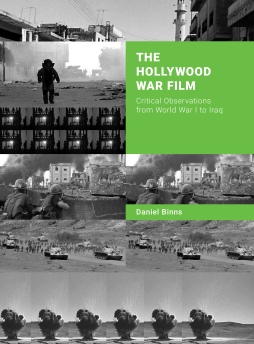
Additional Information
Book Details
Abstract
Considering selected films representing three periods in history – World Wars I and II and their interim, the Vietnam War, and the major conflicts in the Middle East – The Hollywood War Film reflects on Hollywood’s representations of war and conflict, in order to map some cinematic discourses therein. This results in an understanding of the Hollywood genre not just as a categorising tool, but rather as a dynamic, inscriptive, iterative cultural phenomenon. Broadly, the thesis of the book is twofold: Firstly, that there are commonalities in Hollywood films representing distinct conflicts and eras, and that recent war films more closely echo early war films in terms of their nationalistic and idealistic perspectives. Secondly, the work proposes a reconfiguring of genre as less concrete and classificatory, and more dynamic and iterative. In doing so, The Hollywood War Film analyses some of the most important war films from the past century, including All Quiet on the Western Front (1930), Full Metal Jacket (1987) and The Hurt Locker (2009).
Table of Contents
| Section Title | Page | Action | Price |
|---|---|---|---|
| Cover | Cover | ||
| Half Title | i | ||
| Title | iii | ||
| Copyright | iv | ||
| Contents | v | ||
| Acknowledgements and Dedication | vii | ||
| Introduction: War and Cinema | 1 | ||
| Chapter 1: For Glory: World Wars I and II | 21 | ||
| Chapter 2: Fear and Frustration: Korea and Vietnam | 53 | ||
| Chapter 3: Live from the Front Line: Conflict in the Middle East | 85 | ||
| Chapter 4: Extended Discourse: Cross-Platform War | 117 | ||
| Conclusion: Cycles of Violence, Repeat Performances | 145 | ||
| Bibliography | 157 | ||
| Index | 171 | ||
| Back Cover | Back Cover |
